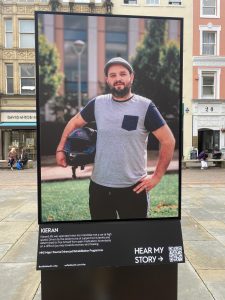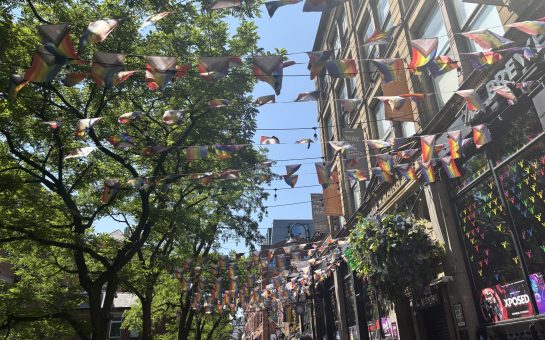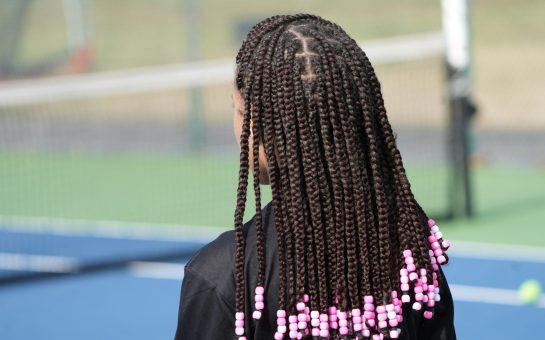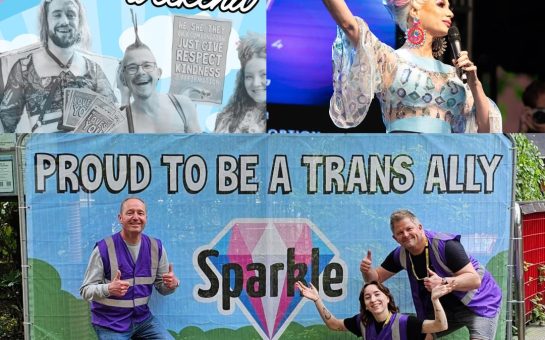If you walk through St Anne’s Square, you will notice a collection of nine large rectangular boxes, precisely arranged in the shape of a ‘U’, directly under the statue of Richard Cobden.
Looking from some angles like fridge-freezers, one side of these black bollards has large pictures of people in various situations, above their name and their story.
Closer inspection reveals that these people have gone through significant pain and adversity. Their cheerful faces do not give away why they have earned a spot in an exhibition called RISE: Stories of Healing & Hope.
Kieran, a dad of three, was a keen motorcyclist until early one sunny morning he was knocked off his bike by a car.

Instantly knocked unconscious when he hit the car’s bonnet, among other injuries Kieran suffered a femur broken in two places, a broken tibia and fibia, a completely destroyed knee, and now has titanium in both wrists.
After suffering from short-term memory loss and anxiety, he was later diagnosed with a ‘diffuse axonal’ brain injury, which can cause those symptoms.
His first physiotherapist advised Kieran to enjoy his life when he could, as “his life was only gonna get harder.”
As part of the exhibition, Kieran and the other participants have been recorded telling their own stories.
In Kieran’s testimony, he said of the time after his accident: “You start to think it’d just be better if I wasn’t here.
“You feel like you’re already dead, but you’re still, you’re still here.”
At the height of the Covid pandemic, Susan, a keen runner, was on her way to the post office when her life changed.
As police chased a car, it mounted the kerb and hit Susan, launching her into another car, which went on to throw her into a third.
These details Susan has had to learn from her friends, TV news, and the police report. She has no memory of the accident.
“I describe it as a blessing and a curse,” Sarah said in her recording.
“It’s a blessing, because reading the police report, it was horrifying. But it’s a curse, because everyone knew about what happened to me, and I don’t know what’s happened to myself.”
As Covid restrictions limited Susan to two named visitors whilst in hospital, she struggled with low mood, and the pain of her injuries.
“I felt very lonely and very sad. It was depressing.
“I thought, ‘I’m in agony, but I’m not staying here.’”
A week before Christmas, Sam was feeling the festive cheer. Wrapping presents in the kitchen to Christmas music, she looked forward to meeting her friends later that week.
Seeing something fall to the floor in the corner of her eye, she immediately bent over to pick it up.
She heard a pop, and was unable to put her foot on the floor for the pain.
She had completely torn her Achilles tendon.
It would be eight months of agony until her operation, which was followed by three and a half weeks stuck in her bedroom.
Six weeks after the operation, she met her physiotherapist, and told him of her goal. She wanted to visit the ancient archaeological city of Petra, in Jordan.
In her recorded testimony, she said: ‘When I saw his reaction, I felt deflated, but defiant as well.
“I just thought, I’m gonna prove you wrong.”
Kieran, Susan, and Sam, and indeed all nine of those featured in the exhibition, have received treatment at the Manchester Institute of Health & Performance, or MIHP, located on the Alan Turing Way.
RISE: Stories of Healing and Hope is presented by MIHP, to ‘provide a glimpse into the victories and challenges that define paths towards recovery.’
Kieran received six months of intensive physiotherapy at MIHP, as part of the Major Trauma Enhanced Rehab Programme. Kieran described it as ‘the best opportunity’:
“The first day, I was nervous but positive. All the equipment was top notch.
“There was me and the walking stick. Six to eight weeks later, I was pushing almost 200 kilos on the leg press.”
Despite what his first physiotherapist told him, Kieran has recovered by leaps and bounds. He no longer needs a walking stick, nor does he take any painkillers or antidepressants.
Sam, meanwhile, took part in the Joint Pain Programme, a 12-week course at MIHP to help people manage chronic joint pain.
In her oral story, Sam explained the elation she felt when she finally managed to climb the stairs at MIHP:
“I can hear all the other people on the course cheering and clapping, and when I got to the top, the cheers were just so loud.
“It’s a feeling of massive accomplishment.”
Susan thought she would feel better once discharged from hospital, but once home she found her mood did not improve.
“The loneliness and vulnerability didn’t go just ‘cause I was home,” she said.
It was not until MIHP offered her six months of intensive rehabilitation that Susan’s recovery began in earnest, of both physical ability and mood.
Susan explained that after seeing other patients affected by road traffic accidents, “you start to feel this is just life.
“You can say, ‘woe is me. I’m giving up.’ Or you can say, ‘I’m gonna recover and live the best life I can.’”
Susan began the rehabilitation programme with 15 minutes of walking. Before her time at MIHP ended, she was able to go for a morning run, from MIHP to the Ethiad Stadium and back.
“There was no fear of falling. I could run,” Susan said.
“And it was like the best morning ever.”
RISE: Stories of Healing & Hope will be on display in St Anne’s Square until 27 September.



